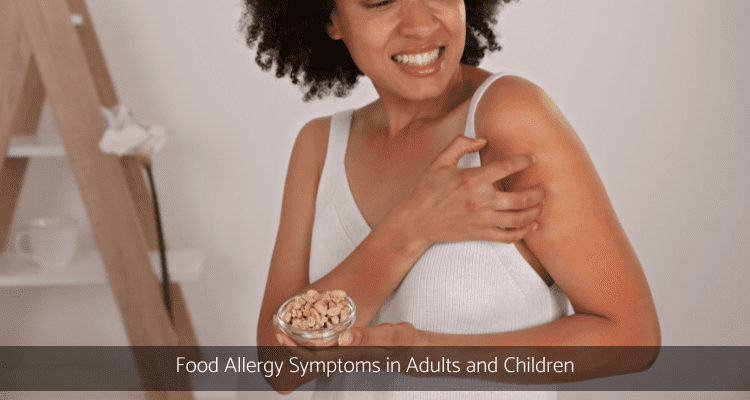There is an increasing trend of food allergy symptoms in adults and children in the developed world. Australia, in fact, has among the highest rate of food allergies in the developed world.
As per the Australasian Society of Clinical Immunology and Allergy, food allergy affects 10% of children up to 1 year of age, between 4-8% of children aged up to 5 years of age, and approximately 2% of adults. Although some children will outgrow their food allergy symptoms, adults who develop food allergies are likely to have them for the rest of their lives.
To create awareness of this growing healthcare concern, 17 to 23 May 2015 has been earmarked as Food Allergy Week in Australia.
What Causes Food Allergies?
Food allergy is an abnormal reaction of the body’s immune system to proteins found in certain foods. Most people with food allergies are allergic to the proteins found in one or more of the following food products:
- shellfish
- fish
- peanutss
- tree nuts
- wheat
- sesame seeds
- soy
- eggs
- cow’s milk
What are the Food Allergy Symptoms?
Food allergies can make it difficult to live a normal life and can even be fatal. Food allergy symptoms usually appear within a few minutes to a couple of hours of eating the food allergen.
Common food allergy symptoms in adults and children include –
- Hives – An outbreak of swollen pale red bumps on the skin that cause itching but may also burn or sting
- Eczema (also known as atopic dermatitis) – Makes the skin red and itchy
- Asthma – Food allergy may trigger bouts of wheezing, coughing, and breathlessness
- Gastrointestinal problems – Vomiting, diarrhoea, cramping and flatulence
- Rashes – Rashes appear around the mouth and throat feels itchy and swollen
- Anaphylaxis – This is the potentially life-threatening outcome of food allergies. Anaphylaxis affects the whole body within moments of the person consuming the food allergen. It involves a combination of symptoms – hives, swelling of the face and throat, vomiting, trouble breathing, diarrhoea, dizziness, excessive sneezing, stomach cramps, low blood pressure, and loss of consciousness. Those diagnosed with risk of anaphylaxis should always carry an EpiPen for emergency use.
Why Have Food Allergies Increased?
There are different theories on why food allergies have grown at an alarming rate over the last few decades. Environment, rather than genetics, seems to play a bigger role in the development of food allergies in an individual. Most children with food allergy do not have parents with food allergy. On the other hand, if one child in the family has food allergies, the siblings are at higher risk of developing the same allergies.
Ironically, the Hygiene Theory suggests that heightened levels of cleanliness, has increased the occurrence of food allergies. Without parasites to combat, the ‘idle’ immune system has altered itself to recognize food proteins as invasive allergens that should be attacked.
Reduced daily exposure to sunlight and the consequent lack of Vitamin D in our bodies may also be to blame for the noticeable increase in allergies. Some studies suggest that folic acid consumption by pregnant women is leading to growing incidence of allergies (including asthma) in babies.
Managing food allergies requires minimising the risk of a reaction and knowing what to do if a reaction happens. The Australasian Society of Clinical Immunology and Allergy (ASCIA) provides valuable updates on living with food allergies. Learn more at www.allergy.org.au.
Photo by: Ambro, freedigitalphotos.net
Author
-
We’re glad you’re here. We’re Carol and Tony, founders of one of the longest running Healthy Home Blogs in the world, Mitey Fresh Australia. We’ve been on this journey for the last 25 years and are passionate about helping families sift through health hazards and triggers like allergens, mould, water damage, chemicals and EMFs, to get clarity about what’s toxic and what’s not so they can create a healthy and happy home for their family they love. Each month, people visit this blog seeking focus on the health and wellbeing of their loved ones, sustainable and effective practice tips and guides, to help create and manage healthier indoor spaces, improve the built environment that is pleasing to the senses and support healthy living and nature, every day. Starting this blog was to help change people’s lives, one family at a time, and we can’t wait to share how its allowed us to stand next to you and show you how interpreting these synergies between buildings and the environment they are built in will impact upon the health and well-being of those who occupy them. Find out more about Healthy Homes and what this blog can do for you!
View all posts





